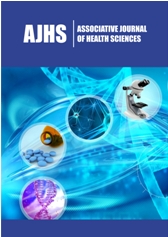- Submissions

Abstract
Associative Journal of Health Sciences
Coronary Calcification - Bone Porosity Interplay, Sex and Overweight Influence in Community-dwelling Elderly
-
Open or CloseJosé Ramón Lanz-Luces1*, Cristian Escobar Guzman2, Michele de Lima3 and
Luís Fernando Escobar Guzman1,4
1Beneficência Portuguesa Hospital of São Paulo (BP), São Paulo, Brazil
2University of São Paulo (USP), São Paulo, Brazil
3de Lima Clinic - São Paulo, Brazil
4Cardio Geriatric Clinical Unit- Heart Institute of the University of São Paulo Medical School, São Paulo, Brazil
*Corresponding author:José Ramón Lanz-Luces, Cardiology Intensive Care Unit Research Group, Beneficência Portuguesa Hospital of São Paulo (BP), São Paulo, Brazil
Submission: March 17, 2025;Published: March 27, 2025

ISSN:2690-9707Volume3 Issue5
Abstract
Background: Although coronary artery calcification (CAC) is osteoporosis associated there is need for
data considering the influence of overweight, sex and other factors in the interplay when analyzing bone
microarchitecture intermediate phenotypes in older adults.
Objectives: we aim to establish whether weight and sex are interrelated in a peripheral bone
microarchitecture-CAC scenario in those particular patients, considering factors that could alter calcium
homeostasis.
Study design: This is retrospective cross-sectional research involving 256 older adults, 168 women and
88 men, from the São Paulo Ageing & Health (SPAH) Study.
Method: The Agatston score assessed CAC and high-resolution peripheral quantitative computed
tomography (HR-pQCT) tibia and radius bone microarchitecture. A Poisson log-link regression model
was used to gauge rate ratio probability between coronary score >100, HR-pQCT variables, factors
osteoporosis-related (calcium supplementation, bisphosphonates, vitamin D, coffee, aspirin), sex and
body mass index (BMI).
Result: The population’s mean age was 79.5+4 years. One hundred and ninety-six showed BMI>25
(76.6%), with higher female prevalence (83.9% vs. 62.5%, p <0 .001). Coffee intake and medication for
bone health lacked association. In the general group, radio porosity was CAC associated (Exp(β):1.058,
CI95%:1.018-1.100, p=0.005) and aspirin (Exp(β): 1.432, CI95%:1.097-1.869). Tibia trabecular number
had a negative interrelation (Exp(β): 0.789, CI95%: 0.654-0.953, p=0.014. When divided by BMI groups,
those with BMI>25 maintained the relations (all p <0.05) however it was lost in the remaining group.
Selecting BMI>25 cases, in women only aspirin and radio porosity were related to CAC, in men were
trabecular parameters (p<0.05).
Conclusion: Coffee or medication intake used in bone metabolism lacks associations in the models
studied. The CAC-bone microarchitecture relationship is modified by weight in older adults. Furthermore,
being overweight entailed different performances for cortical and trabecular bone microarchitecture and
aspirin intake between sexes. At last, our findings shows that in older adults, sex and overweight express
differences in bone microarchitecture related to coronary calcification
Keywords:Coronary calcification; Osteoporosis; Overweight; Bone microarchitecture; Sex differences
Abbreviations: CAC: Coronary Artery Calcification; SPAH: São Paulo Ageing & Health study; HR-pQCT: High-Resolution Peripheral Quantitative Computed Tomography; BMI: Body Mass Index; DEXA: Dual-Energy X-Ray Absorptiometry; CVD: Cardiovascular Disease; AIDR 3D: Adaptive Iterative Dose Reduction 3-Dimensional Algorithm; BMD: Bone Mineral Density; WHO: World Health Organization; CT: Coronary Tomography; Tb.vBMD: Trabecular Volumetric Density; Tb.N: Number of Trabeculae; Tb.Th: Trabecular Thickness; Tb.Sp: Trabecular Separation; Ct.vBMD: Cortical Volumetric Density; Ct.Po: Cortical Porosity; CAPPesq: Ethics Committee of the University of São Paulo School of Medicine; EVOS: European Vertebral Osteoporosis Study; FAPESP: Sao Paulo State Research and Support Foundation; CNPQ: National Council of Science and Technology
 a Creative Commons Attribution 4.0 International License. Based on a work at www.crimsonpublishers.com.
Best viewed in
a Creative Commons Attribution 4.0 International License. Based on a work at www.crimsonpublishers.com.
Best viewed in 







.jpg)






























 Editorial Board Registrations
Editorial Board Registrations Submit your Article
Submit your Article Refer a Friend
Refer a Friend Advertise With Us
Advertise With Us
.jpg)






.jpg)














.bmp)
.jpg)
.png)
.jpg)










.jpg)






.png)

.png)



.png)






